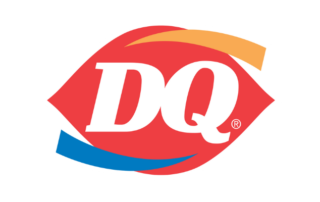Demand response is a program offered in many electric grid regions throughout the U.S. that allows commercial and residential customers to benefit financially from becoming more energy efficient and reducing their electricity demand. This page aims to outline how energy demand response programs work and how you can take advantage of this unique opportunity.
What Is An Energy Demand Response Program & How Does It Work?
Since electricity is almost instantaneously consumed after it is generated, electric grid operators are tasked with the challenge of having to continually ensure that power supply and demand are in balance. When they are not, blackouts on the grid can occur and disrupt energy flow.
In order to keep up with ever-growing consumer demand, energy regulators have approved many electricity generation projects over the last several decades. Furthermore, there has been a great amount of investment and funding for the improvement of the electrical transmission system in the U.S.
Despite these efforts, the challenge to match consumer electric demand has fallen short. And, because it is so expensive and time-consuming to continually build new energy supply sources, regulators came up with another solution – demand response.
Energy demand response programs are offered by utilities are grid providers as a way to free up electric capacity during peak demand events. Specifically, utilities will pay customers enrolled in demand response (DR) programs for reducing their energy demand during certain times.
These programs work by measuring the total amount of power that a building or home is able to reduce during a peak demand period and compensating that consumer as if he/she generated the power themselves.
Benefits of Demand Response: Why Do Customers Get Paid?
Customers enrolled in DR programs get paid for reducing electricity load because it frees up more capacity for the grid operators and utilities during times of peak demand. Utility companies treat reduced energy demand the same as newly generated power. When it’s a hot summer day and there is lots of stress on the grid, power companies will pay customers to reduce load so they can meet total demand. There are several benefits of demand response:
Income Source For Consumers
As a consumer, the primary benefit of energy demand response is its revenue stream. Large commercial customers, that are particularly able to reduce a significant amount of energy consumption during peak demand events, can earn considerable amounts of money. In some cases, demand response income can be six and seven figures for these types of customers.
Grid Reliability
Another key element of this program is its support of the electric grid. In modern times, there is much investment in distributed energy resources, smart metering, and solar systems to reduce stress on the electricity grid. However, consumer demand is outpacing all other energy efficiency initiatives. Demand response is a critical element of our power grid that eases stress on transmission lines when it’s needed the most. Demand response has proven to be an effective tool to promote grid reliability.
Environmental Benefits
Because the core action in a DR program is to reduce electricity consumption, this has a great environmental impact. After all, the majority of U.S. electricity generation still relies on fossil fuels which are harmful to the environment. Any sort of effort to reduce power demand can have a positive impact on environmental factors due to the reduction in power generation.
Who Can Enroll?
While demand response programs have historically been reserved for commercial customers, new technologies and incentives make these initiatives available to residential customers as well.
Commercial Customers
Commercial customers looking to participate in DR must enroll in a program with a demand response provider. These companies are registered with grid operators and have the ability to collect money on behalf of their customers from the electric grid.
Commercial customers must apply and enroll in the program before the beginning of the peak season, which is typically the summer. They must commit to a certain amount of energy reduction during peak events or receive hefty penalties for not shutting down.
In order to ensure that their customers remain in compliance, many demand response providers have technology tied to the consumer’s building that will automatically shut off motors when a demand response event is called.
Residential Customers
While residential customers cannot participate directly in a DR program the same way as commercial customers, there are several companies utilizing technology to aggregate large groups of residential customers together in order to participate in the program. Some utility companies even offer incentives to residential customers for using power at night or on weekends. This can be regarded as a form of demand response management since most peak events are during on-peak, weekday hours.
How Do I Enroll?
If you’re interested in participating in a DR program, you need to enroll with a demand response company. The DR company can help you forecast the amount of energy you can commit to reducing during a peak event, and in many cases, they can even automate the reduction for you.
Utilizing An Energy Broker For DR
A good energy broker or consultant can guide you through your options on Demand Response. In fact, many energy brokerage companies have included demand response as a service offering in an effort to deliver a more comprehensive solution. One advantage to utilizing an energy broker for DR is that brokers can match electricity supply plans that will produce extra savings when you reduce your energy load. Certain hybrid energy products, like block + index energy contracts, allow you to pay the actual cost of capacity and transmission rates, so a DR reduction will also save you on electricity supply costs.
Interested In Demand Response?
In conclusion, demand response programs are a great way to improve electric grid reliability, act as a revenue source for consumers, and even benefit the environment. As one of the nation’s leading energy companies, we offer DR solutions to our commercial and industrial customers. If you are interested in exploring DR for your business, contact us today and we can guide you through your options.





